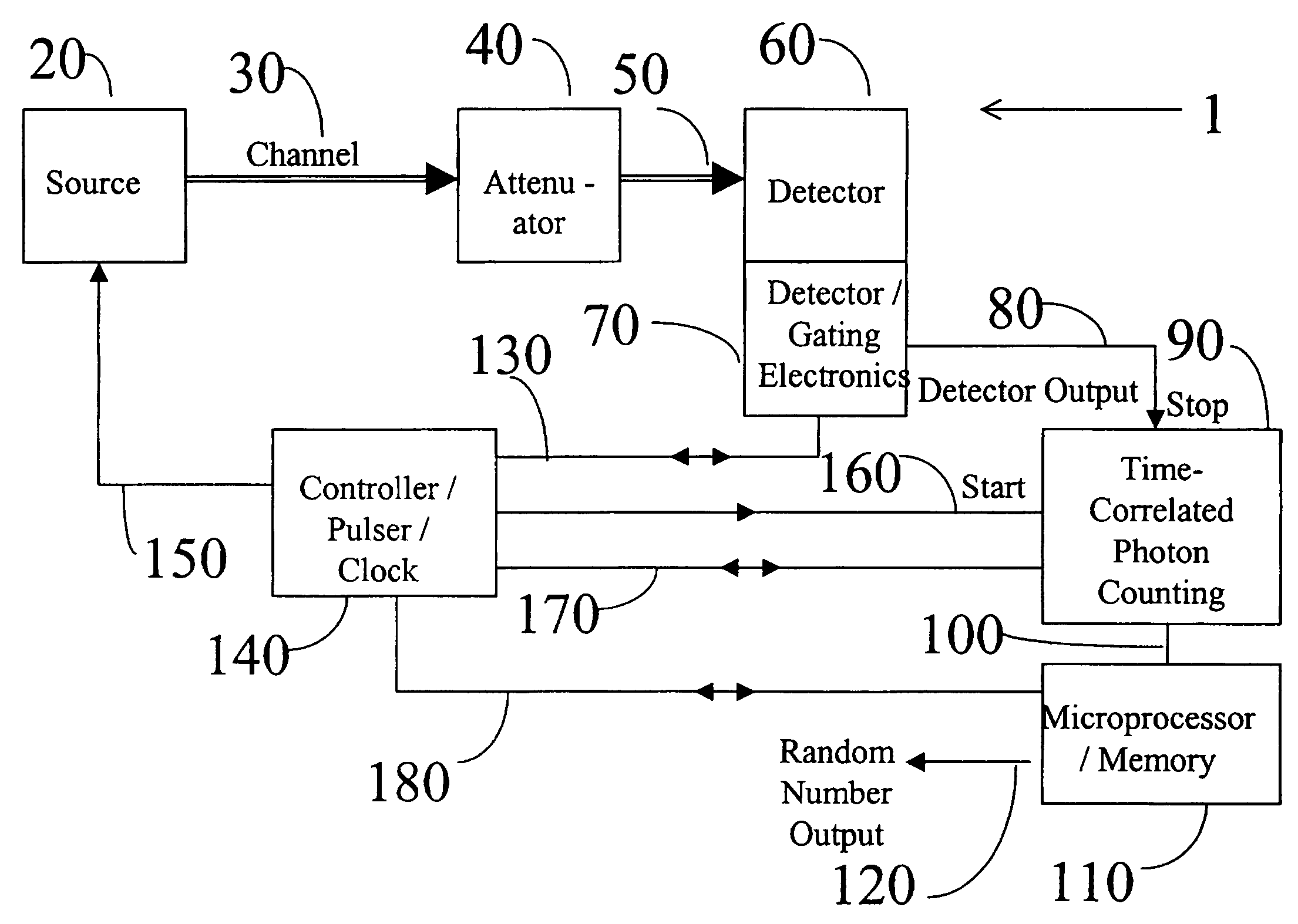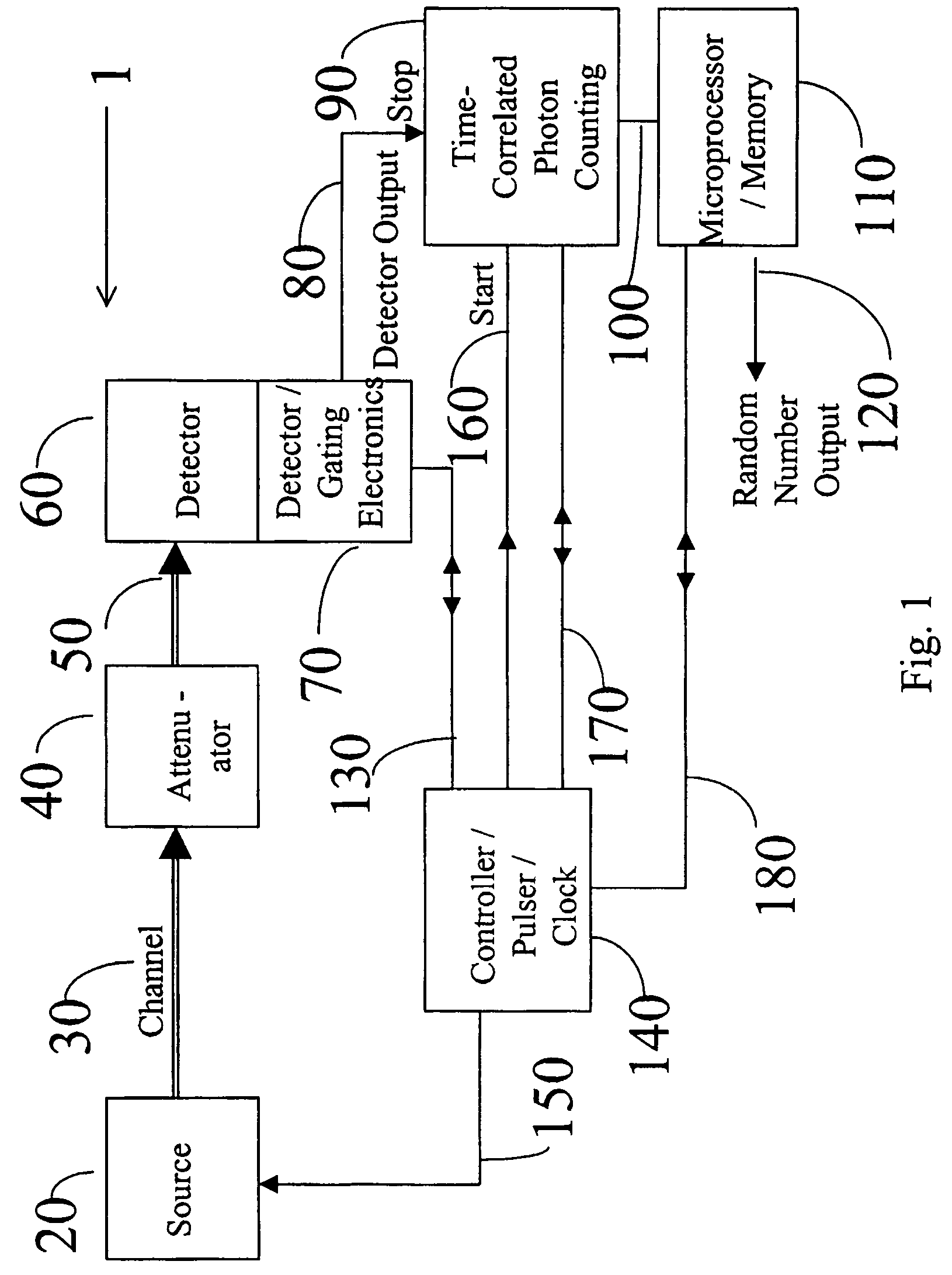Efficient use of detectors for random number generation
a technology of random number generation and detectors, applied in the field of random number generators, to achieve the effect of maximizing efficient detector usage and reducing dark count rates
- Summary
- Abstract
- Description
- Claims
- Application Information
AI Technical Summary
Benefits of technology
Problems solved by technology
Method used
Image
Examples
Embodiment Construction
[0040]FIG. 1 shows a system 1. System 1 includes photon or optical pulse source 20, light conducting channel 30, attenuator 40, light conducting channel 50, detector 60, detector gating electronics 70, detector output 80, time correlated photon counting 90, data line 100, microprocessor / memory 110, random number output 120, control / data line 130, controller / pulser / clock 140, control line 150, control line 160, control / data line 170, and control / data line 180.
[0041]Source 20 produces a plurality of sequences of n pulses, which are plotted as source power versus time in FIGS. 2, 3, and 4 for different methods of using the preferred embodiment. Source 20 may consist of a coherent light source or an incoherent light source. Source 20 emits pulses directly or emits continuous light from which a pulser or amplitude modulator slices pulses. Channel 30 conveys photons from source 20 to attenuator 40. If source 20 provides sufficiently low enough intensity pulses, attenuator 40 is not necess...
PUM
 Login to View More
Login to View More Abstract
Description
Claims
Application Information
 Login to View More
Login to View More - R&D
- Intellectual Property
- Life Sciences
- Materials
- Tech Scout
- Unparalleled Data Quality
- Higher Quality Content
- 60% Fewer Hallucinations
Browse by: Latest US Patents, China's latest patents, Technical Efficacy Thesaurus, Application Domain, Technology Topic, Popular Technical Reports.
© 2025 PatSnap. All rights reserved.Legal|Privacy policy|Modern Slavery Act Transparency Statement|Sitemap|About US| Contact US: help@patsnap.com



